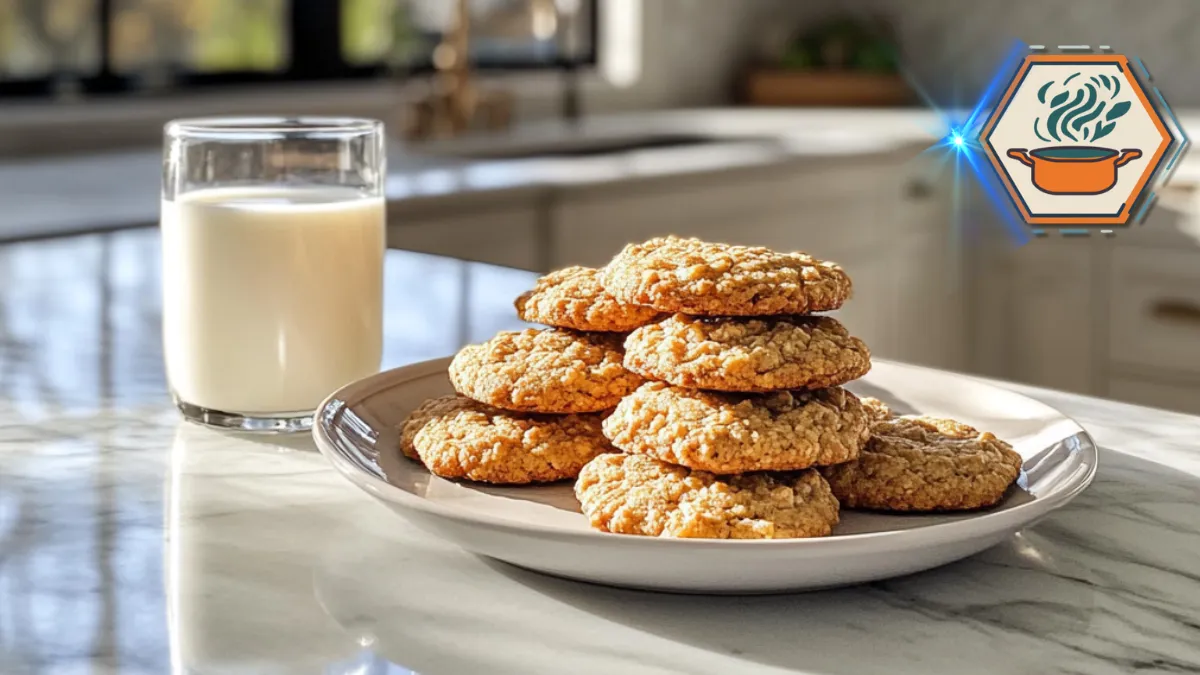Time to read:11 minutes
Table of Contents
Ingredients and Preparation for Crunchy Cookies
The secret to crunchy cookies lies in using the right ingredients and preparation methods. Every element, from flour to sugar, plays a role in creating that irresistible texture. Follow these tips to make cookies that stay crunchy every time.
Importance of Quality Ingredients
High-quality ingredients are the foundation of a good cookie. Using fresh, pure, and well-measured components will make a significant difference in the crunch factor.
- Butter: Always choose unsalted butter to control the saltiness. Softened butter blends better and creates a consistent dough.
- Eggs: Use room-temperature eggs. They bind the dough better and help maintain the desired texture.
- Vanilla Extract: Pure vanilla extract enhances flavor without overpowering the crunch.
For more cookie preparation tips, check out our guide on Jazz Up Sugar Cookies.
Role of Baking Soda and Baking Powder in Texture
Baking soda and baking powder are crucial for achieving the perfect crunch.
- Baking Soda: Reacts with acidic ingredients like brown sugar, creating small air pockets. These pockets contribute to a crispier texture.
- Baking Powder: While primarily used for fluffiness, a small amount can stabilize cookies and prevent them from becoming too soft.
Tip: Measure these leavening agents accurately. Too much baking soda can cause an unpleasant taste, while too little affects crunch.
Choosing the Right Type of Flour
Flour impacts the structure of cookies. The protein content in flour determines the balance between crunch and chew.
- All-Purpose Flour: Ideal for most recipes, providing a medium crunch.
- Bread Flour: Contains more protein, which results in firmer, crunchier cookies.
- Cake Flour: Use sparingly; it’s low in protein and may lead to soft cookies.
Mixing flours can also yield exciting results. For example, combining bread flour and all-purpose flour balances structure and crispiness.
How Sugar Affects Cookie Crunchiness
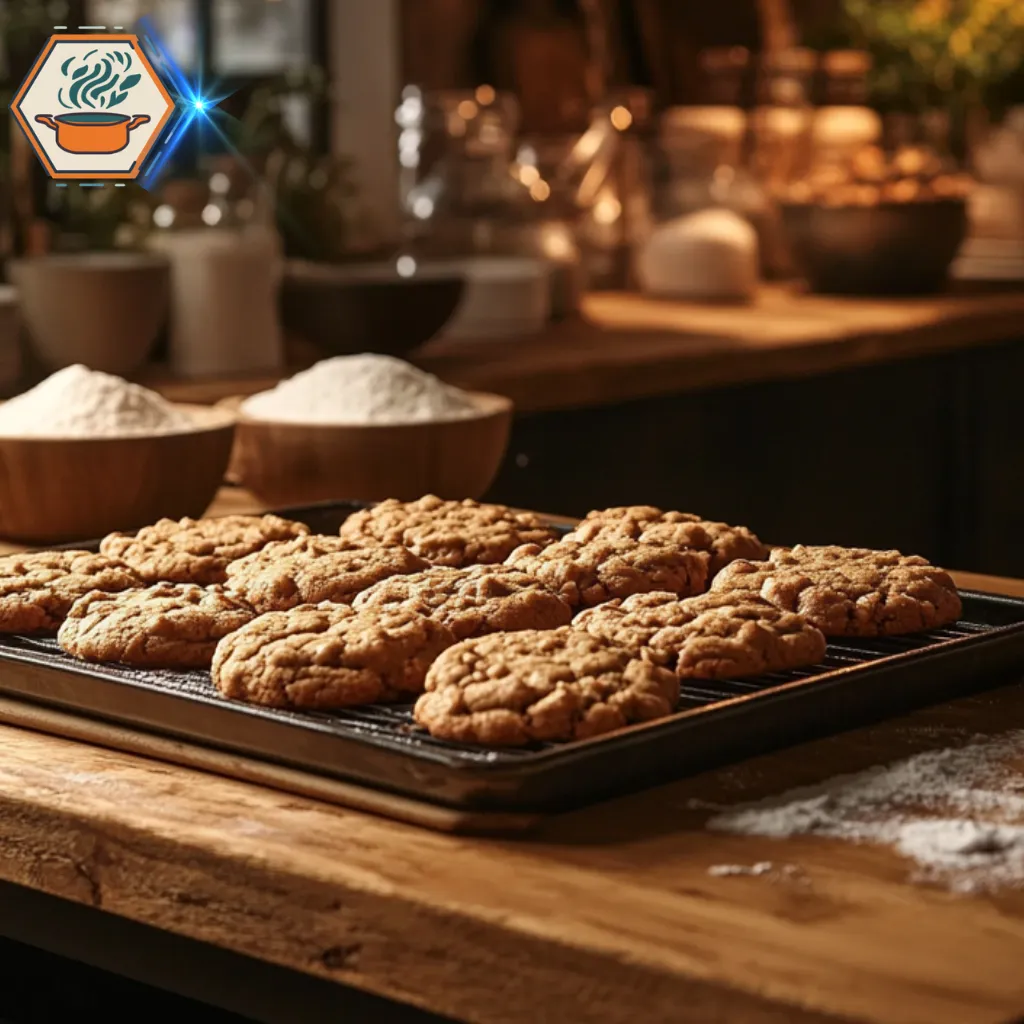
Sugar isn’t just about sweetness; it’s a key player in texture. Different types of sugar create distinct results:
- Granulated Sugar: Promotes spreading and contributes to a crunchy surface.
- Brown Sugar: Adds moisture and creates a slightly chewy interior. Use less if aiming for maximum crunch.
- Powdered Sugar: Produces a finer texture and can reduce crispness.
To make cookies crunchier, reduce the brown sugar and increase granulated sugar. Experimenting with ratios can help you find the right balance.
For in-depth baking science, refer to Wikipedia’s page on sugar’s role in baking.
Secret Tips for Mixing the Perfect Dough
The dough-making process directly impacts the crunch of your cookies. Here’s how to master it:
- Chill the Dough: Cold dough spreads less in the oven, creating thicker, crunchier cookies. Refrigerate for at least 30 minutes before baking.
- Don’t Overmix: Overmixing the dough develops gluten, which can make cookies tough. Mix just until ingredients are combined.
- Add Air: Cream butter and sugar for at least 3 minutes. This incorporates air into the dough, contributing to light, crisp cookies.
Additional Tips
- Use parchment paper for even baking and easier cleanup.
- Roll dough balls of uniform size to ensure all cookies bake evenly.
Baking Techniques for Achieving Crunchiness
Preheating the Oven: Why It Matters
Preheating the oven is an essential step in mastering the secret to crunchy cookies. This simple action ensures that the heat is evenly distributed, allowing the cookies to bake consistently. When the dough is placed in a fully preheated oven, the exterior begins to set immediately, creating a crisp outer layer. Without preheating, the cookies might spread too much, leading to a softer texture.
Key Tips:
- Always preheat the oven to the temperature specified in your recipe (typically between 350°F and 375°F for cookies).
- Use an oven thermometer to verify the accuracy of your oven’s temperature.
For a comprehensive understanding of oven settings and their impact on baking, consider exploring The Hummingbird Bakery’s guide on oven temperatures and baking. This resource provides detailed insights into how different oven settings affect your baking results, helping you achieve consistent and precise outcomes.
Choosing the Right Baking Tray and Parchment Paper
The type of baking tray you use can influence the crunchiness of your cookies. A light-colored aluminum tray is ideal because it distributes heat evenly without overheating. Dark trays, on the other hand, can cause the bottoms to brown too quickly, potentially leading to burnt cookies.
Recommendations:
- Use a rimless baking tray for better airflow around the cookies.
- Line the tray with parchment paper to prevent sticking and ensure even baking.
Parchment paper is a better choice than greasing the tray, as it avoids additional moisture that might make cookies less crisp.
Spacing Cookies for Even Baking
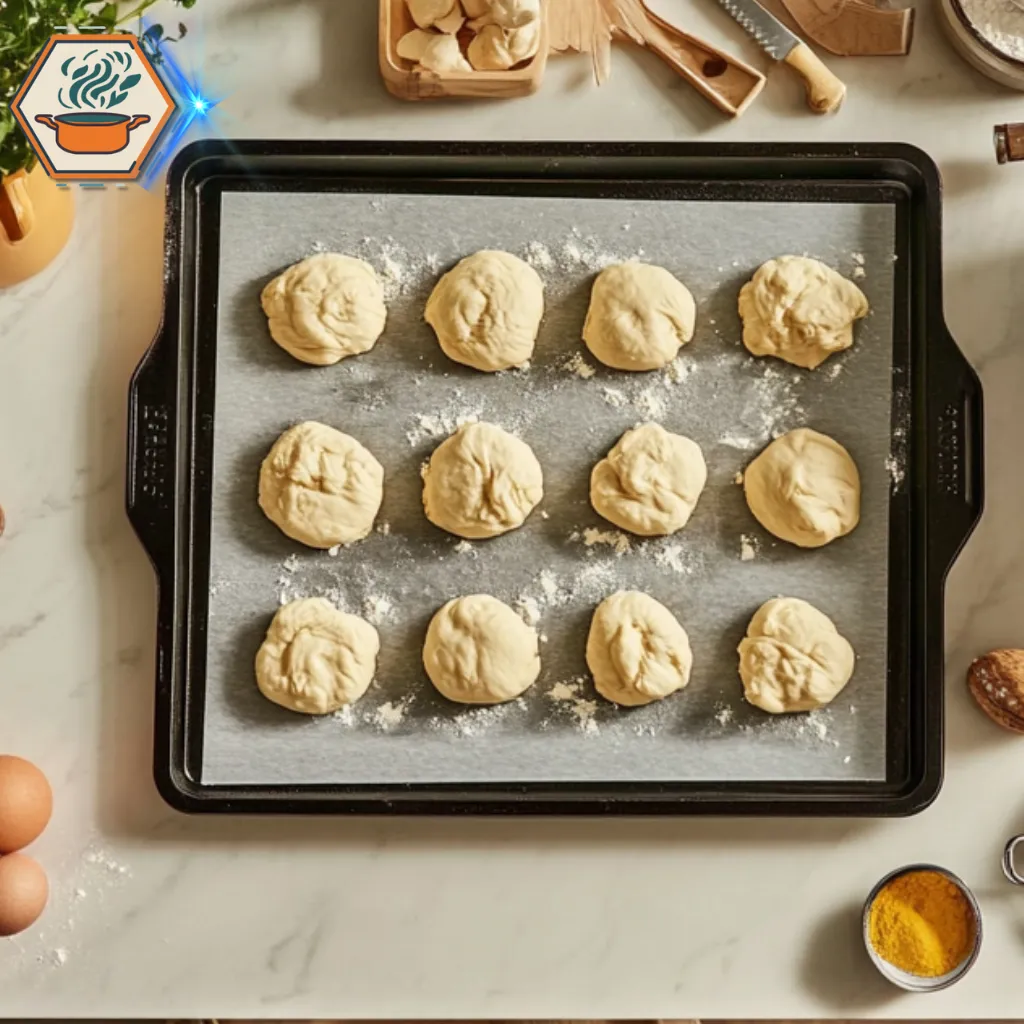
Proper spacing is crucial for ensuring each cookie bakes to perfection. Crowding the baking tray can result in uneven heat distribution, causing some cookies to remain soft while others become overly crunchy.
Spacing Tips:
- Leave at least 2 inches between each cookie.
- Use a cookie scoop for uniform sizing, ensuring even baking times.
By maintaining appropriate spacing, you help the cookies develop a consistent crunch without merging or sticking together.
Baking Times: Striking the Perfect Balance
Timing is everything when aiming for crunchy cookies. Removing cookies too early leaves them underbaked and soft, while leaving them in the oven too long risks burning them. The perfect baking time can vary depending on the size and ingredients of the cookies.
Timing Strategies:
- Start checking the cookies 2 minutes before the recommended baking time.
- Look for golden edges and a firm surface as indicators they’re ready.
- Rotate the tray halfway through baking to ensure even heat exposure.
For an in-depth understanding of the science behind baking, including the importance of precise timing, consider exploring Britannica’s article on baking. This resource provides comprehensive insights into baking processes and techniques.
Cooling Methods to Lock in Crunch
Cooling is an often-overlooked step in achieving the perfect crunchy texture. Once the cookies are out of the oven, allowing them to cool properly helps set their structure and enhance their crunch.
Effective Cooling Techniques:
- Transfer cookies to a wire rack immediately after baking. This prevents residual heat from softening the bottoms.
- Avoid stacking cookies until they are completely cooled, as trapped steam can soften them.
If you’re interested in other secrets for crunchy treats, check out our guide on the perfect meatloaf every time for tips that can apply to savory and sweet dishes alike.
By following these techniques, you’ll be well on your way to mastering the secret to crunchy cookies every time you bake. Consistency in these steps ensures that your cookies will have the perfect texture that everyone loves.
Flavor Enhancements and Add-ins for Crunchy Cookies
Creating the secret to crunchy cookies often lies in the combination of flavors and textures. Add-ins and spices bring character to cookies while maintaining the desired crunch. Below, we explore key ingredients and tips to achieve the perfect balance of taste and texture.
Popular Add-ins: Nuts, Chocolate, and More
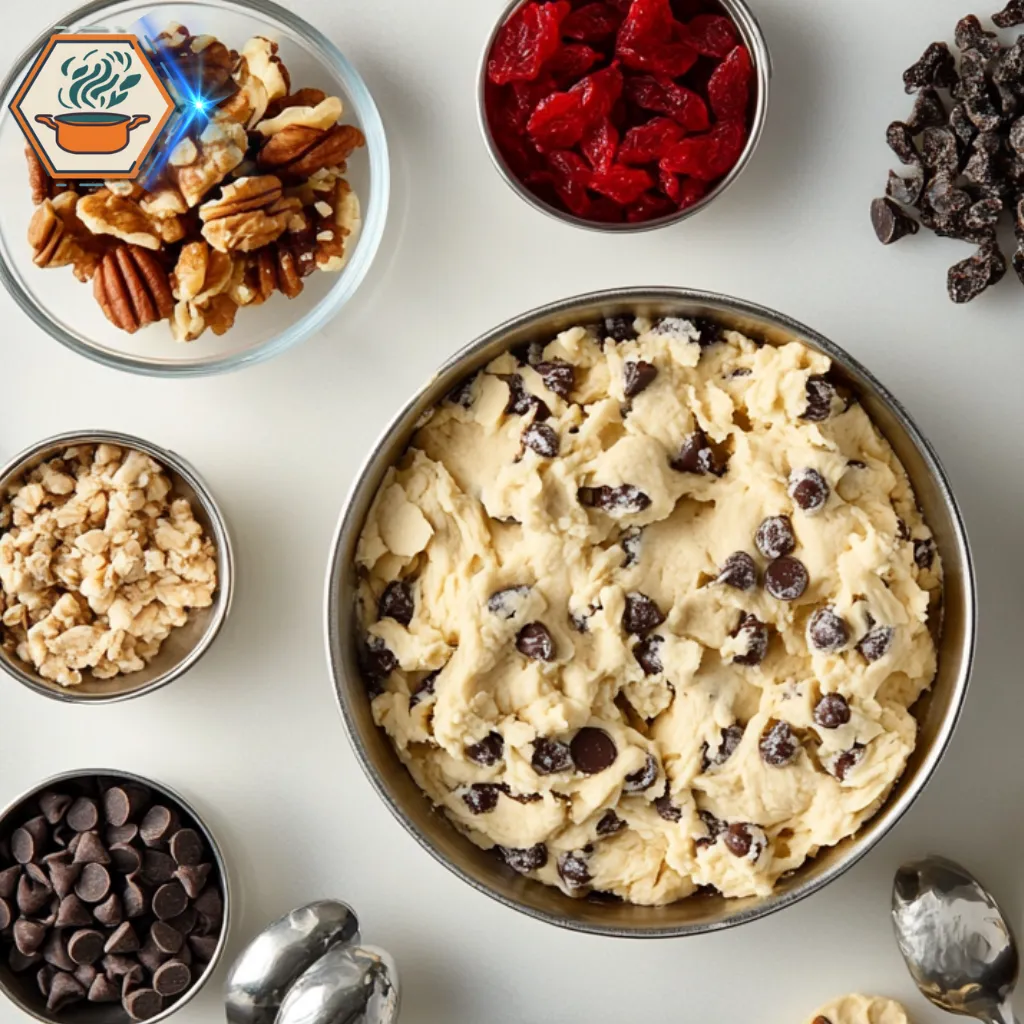
Add-ins like nuts and chocolate chips can elevate the texture of cookies:
- Nuts: Almonds, pecans, or walnuts introduce a crisp bite that pairs well with soft cookie interiors. Chop them finely for a uniform texture or leave them larger for a pronounced crunch.
- Chocolate Chips: Semi-sweet or dark chocolate chips add bursts of sweetness without overpowering the crispness.
- Dried Fruits: Consider adding raisins, dried cranberries, or cherries. These can offer contrasting textures when combined with crisp elements like oats.
Incorporating the right add-ins is often part of the secret to crunchy cookies. Ingredients like nuts or chocolate not only add flavor but also play a role in achieving a satisfying crunch.
The Role of Spices in Cookie Crunch
Spices like cinnamon, ginger, or nutmeg not only enhance flavor but can also influence the texture:
- Cinnamon: A small amount intensifies the warmth of your cookies. It complements crispy oats or nut add-ins.
- Ginger: Use powdered ginger for a zesty touch or crystallized ginger pieces for an extra chew against a crunchy base.
- Nutmeg: Adds a subtle spiciness that pairs beautifully with brown sugar, a key ingredient in crunchy cookie recipes.
Spices should be used sparingly to avoid overwhelming other textures.
Texture-Enhancing Ingredients: Oats, Cornflakes, and More
Table: Texture-Enhancing Ingredients for Crunchy Cookies
| Ingredient | Texture Impact | Flavor Notes | Usage Tips |
|---|---|---|---|
| Rolled Oats | Adds chewiness with crispy edges | Subtle nutty flavor | Use whole oats for a rustic texture. |
| Quick Oats | Creates a uniform crunch | Neutral | Combine with brown sugar for depth. |
| Cornflakes | Light, flaky crunch | Slightly sweet | Crush lightly before mixing into the dough. |
| Coconut Flakes | Crisp and slightly chewy | Nutty and mild | Use unsweetened flakes to control sweetness. |
| Chopped Nuts | Firm, crunchy texture | Bold and rich | Toast nuts beforehand for enhanced flavor. |
| Crushed Pretzels | Salty, crispy crunch | Savory twist | Mix into dough for a unique sweet-salty combo. |
To achieve the secret to crunchy cookies, incorporating texture-specific ingredients is crucial:
- Oats: Rolled oats can add chewiness with crisp edges, while quick oats result in a more uniform crunch.
- Cornflakes: A surprising yet effective ingredient. Crush them lightly and fold them into your dough for a distinct crunch.
- Coconut Flakes: Use unsweetened flakes to add crispness and a subtle nutty flavor.
These ingredients create a cookie that’s layered in texture, making each bite unique.
Balancing Flavors Without Losing Crunch
Balancing flavors is essential for a cookie that tastes as good as it crunches:
- Sweeteners: Using white sugar promotes crisp edges, while brown sugar offers a softer chew. A balance of both ensures structure and flavor.
- Butter: Melted butter creates a denser, crisper cookie, while softened butter provides more air for a delicate texture.
- Salt: Don’t skip salt; it enhances sweetness and prevents flavors from feeling flat.
Tips for Personalized Crunchy Cookie Recipes
For those seeking to customize their cookies, follow these tips:
- Experiment with Flours: Substitute a portion of all-purpose flour with whole wheat for a nuttier, firmer texture.
- Adjust Baking Time: Extending the baking time slightly allows for a firmer crunch. Watch closely to avoid overbaking.
- Layer Add-ins: Mix different textures like oats, nuts, and chocolate chips for a multidimensional crunch.
- Chill the Dough: Refrigerating the dough before baking helps control spreading, ensuring a crisp edge and chewy center.
Avoid These Mistakes to Unlock the Secret to Crunchy Cookies
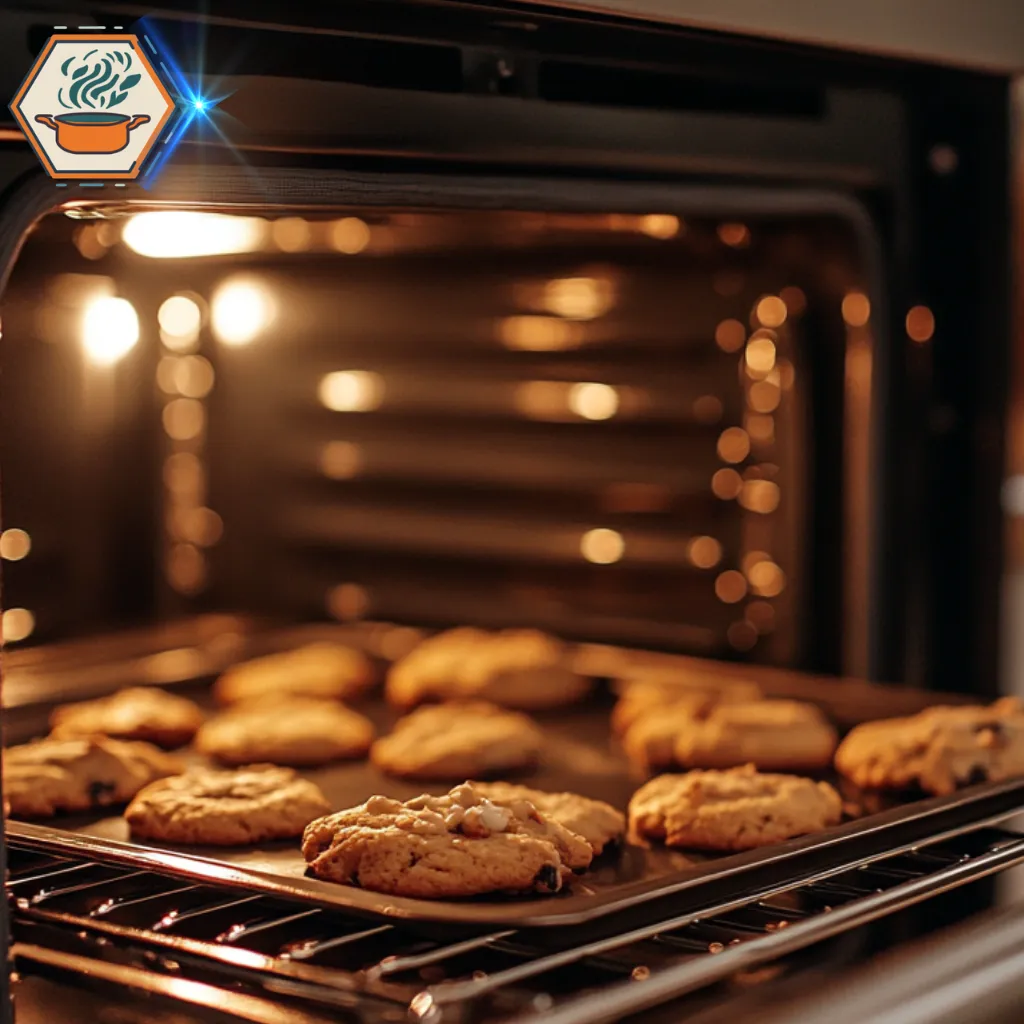
Achieving the secret to crunchy cookies can be surprisingly tricky. Many common baking errors can prevent your cookies from achieving the perfect crunch. Here are the most frequent mistakes and tips on how to fix them.
Overmixing: Why It Makes Cookies Soft
One of the most common pitfalls when aiming for crunchy cookies is overmixing the dough. When you mix your dough excessively, gluten develops in the flour, leading to a chewy texture instead of the desired crunch.
How to Avoid Overmixing:
- Mix wet and dry ingredients separately before combining them.
- Stir only until the ingredients are just blended.
- Use a spatula or wooden spoon instead of a mixer when possible.
Misjudging Oven Temperature
Incorrect oven temperatures can completely derail your baking efforts. If your oven is too hot, the outside of the cookies will cook too quickly, leaving the center soft. Conversely, a low temperature may result in underbaked, chewy cookies.
How to Avoid This Mistake:
- Use an oven thermometer to verify your oven’s actual temperature.
- Preheat your oven for at least 15 minutes before baking.
- Follow the recipe’s recommended baking time closely, adjusting for your oven’s quirks if necessary.
Using Improper Measurements for Ingredients
Baking is a science, and even slight variations in ingredient quantities can lead to disappointing results. For example, too much flour can make cookies dry and too little sugar can reduce caramelization, which contributes to crunch.
Tips for Precise Measurements:
- Always use a digital kitchen scale for accuracy.
- Level off dry ingredients with a flat edge.
- Avoid substituting ingredients unless you’re experienced with recipe modifications.
Proper Cooling for Achieving Crunchy Cookies
If you don’t let your cookies cool completely on a wire rack, residual heat can make them soft and soggy. Cooling them directly on a baking sheet retains steam, which diminishes the crunch.
Steps for Proper Cooling:
- Transfer cookies to a wire rack immediately after baking.
- Ensure there is adequate airflow around the cookies as they cool.
- Wait until cookies are fully cooled before storing them to prevent condensation.
Storing Cookies to Preserve Their Crunchy Secret
Even perfectly baked cookies can lose their crunch if not stored correctly. Exposure to moisture or air softens the texture over time.
Best Practices for Storage:
- Store cookies in an airtight container to lock out humidity.
- Use parchment paper between layers to maintain their shape and texture.
- Add a slice of bread to the container to absorb excess moisture.
By avoiding these common errors and following these tips, you can consistently achieve the perfect crunch. Don’t forget to experiment with your recipes and techniques to find what works best for your kitchen.

